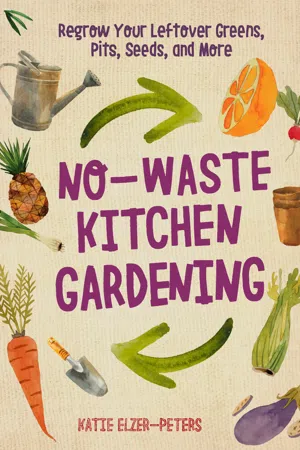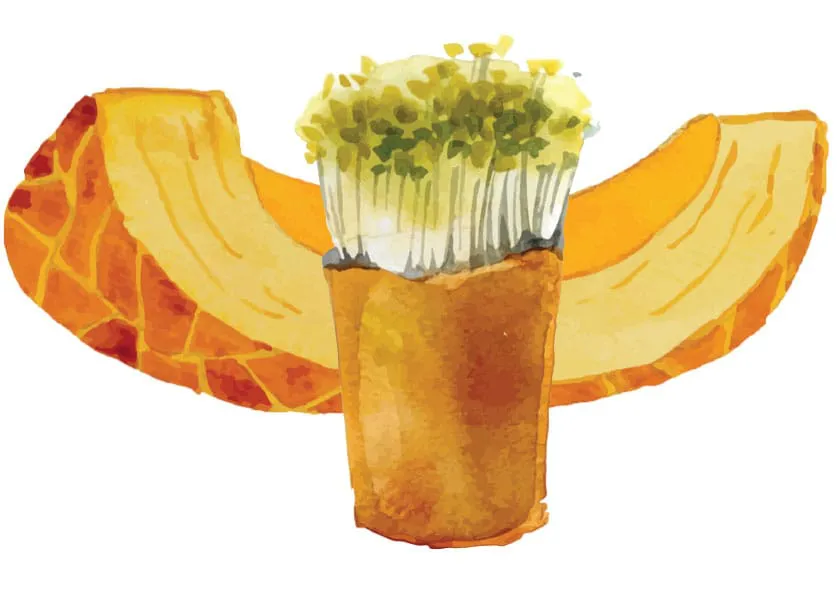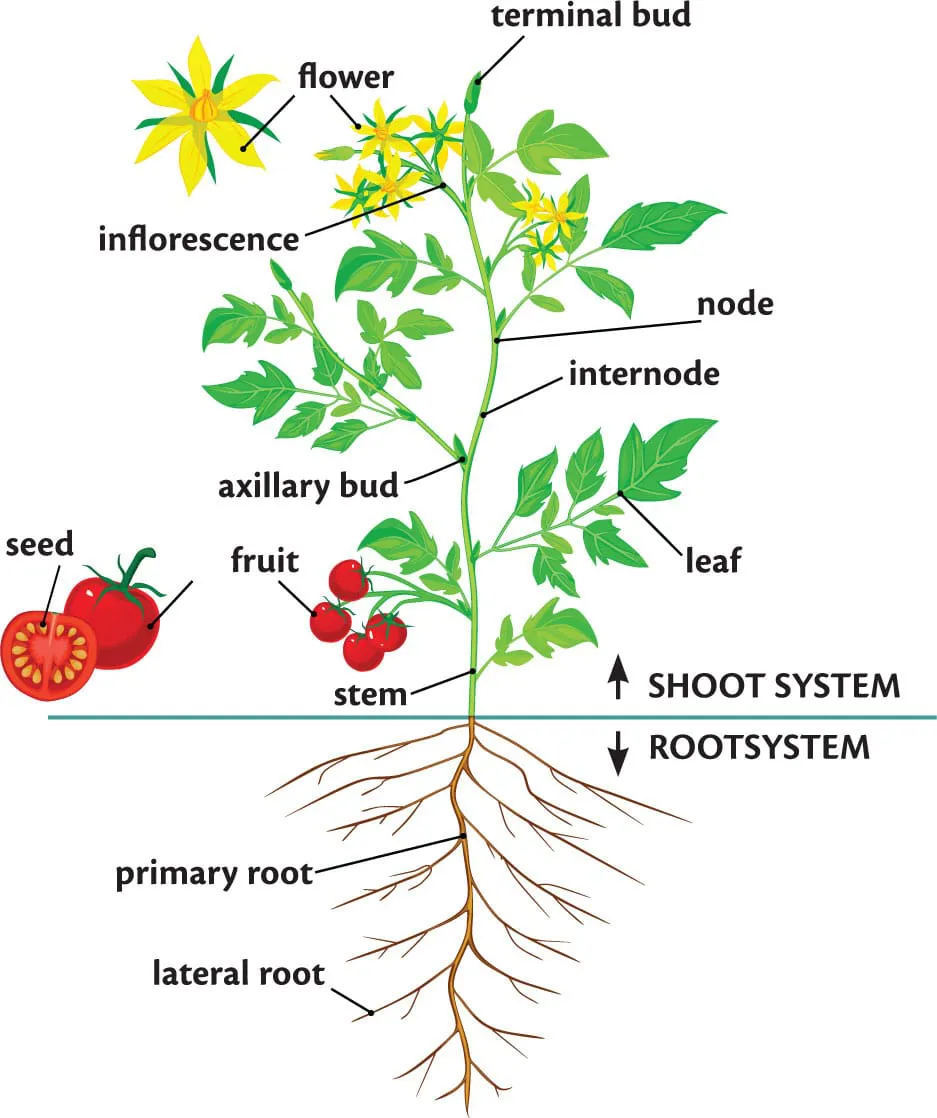CHAPTER
1
No-Waste Kitchen Gardening: How It Works and How to Do It
Plants are pretty incredible living things. The tiniest of seeds contains everything needed to grow tall oak trees and long squash vines. You can cut pieces off of some plants, stick the pieces in water, and watch them grow roots. Some plants grow, flower, produce seeds, and then die back, only to emerge again the following year from their roots. Some of these perennial plants may last for many decades; other short-lived annuals live their lives in a flash, barely lasting a single growing season before fading and wilting.
To regrow kitchen scraps, you’ll need to get a handle on some basic plant science (botany). Depending on the vegetable, it may be the seeds, the roots, the leaves, the stems, or some modified version of stems that you are eating, so you’ll need to be able to identify which part you’re trying to regrow and where that plant part fits in the plant life cycle. That information will help you know what to expect from your regrowing efforts.
There are many plants that are possible to regrow that aren’t covered in this book. I’m focusing on those that are easier and more productive, because the goal here is not only to eat well, but to have fun doing it. But with the information in this chapter, you’ll have a foundation for regrowing plants I don’t cover as well as those I do.
PARTS OF THE PLANT: ROOT YOUR SHOOTS AND EAT YOUR LEAVES
As you learn about the finer points of no-waste kitchen gardening, there’s one overarching principle to keep in mind: any plant part you want to regrow must have some type of stem-growing tip in it or on it.
What is called the “growing tip” can take different forms across different types of plants and different parts of plants. Roots have growing tips and so do stems. You’ll hear more about this in the individual plant-part descriptions. When you’re looking at a plant part and trying to determine whether you can regrow it at all, the key is to find a point that can expand into more stems, more branches, more leaves, and/or eventually, flowers.
The growing tip in a bunch of celery is actually buried deep within the stalks that we eat.
Roots
Roots are the underground parts of the plant from which the plant takes up food and water. Roots have growing tips at their ends so that the roots will keep growing down into the soil, but they do not have stem-growing tips anywhere along the roots. If you want to regrow these vegetables you have to look for root vegetables with the tops intact or, if there are no leaves, at least plant parts where the tops have been not sliced off.
Root vegetables include:
• Beets
• Carrots
• Parsnips
• Radishes
• Rutabagas
• Sweet potatoes
• Turnips
• Yams
Some of our favorite vegetables for regrowing are roots: beets, carrots, turnips, parsnips, and radishes. You won’t get full new carrots to eat, but you’ll get some delicious greens.
There are two main types of roots that we eat: taproots and tuberous roots. Most of the root vegetables we eat fall into the taproot category, including carrots, turnips, and radishes. If the top of the taproot where the leaves sprout is still intact, you can regrow some leaves to enjoy, but you cannot regrow the taproot itself.
Sweet potatoes and cassava are plants that have tuberous roots. The difference between these plants and those with taproots is that you can grow a whole new plant from a piece of the tuberous root. This is not a difficult process but it does involve many steps (see Chapter 2).
One sweet potato plant produces multiple tuberous roots.
Stems
Stems are usually aboveground, but there are modified stems that grow belowground or half aboveground and half belowground. What distinguishes a stem from a root is that it has a growing tip and buds that can sprout new branches that will eventually form flowers (and then fruits and seeds). The stem is the structure that supports the leaves, flowers, seeds, fruits, and other aboveground plant parts. Collectively, all of these parts are called the shoot.
A tree trunk is essentially a big stem with branches and leaves. How does that relate to what you’re eating? If there are branches or leaves coming out of the plant part that you’re eating, that’s the stem. If ther...






